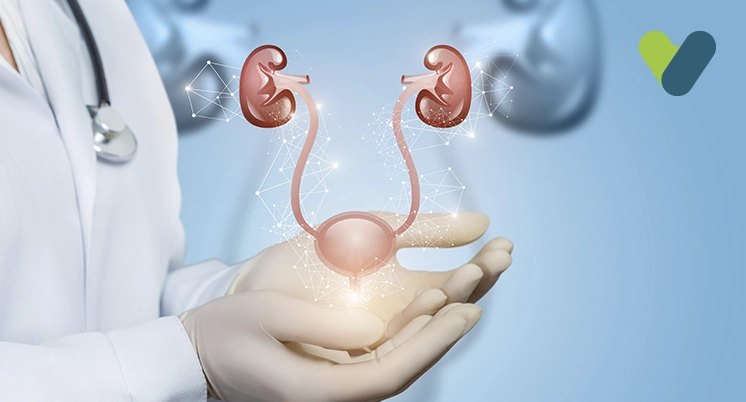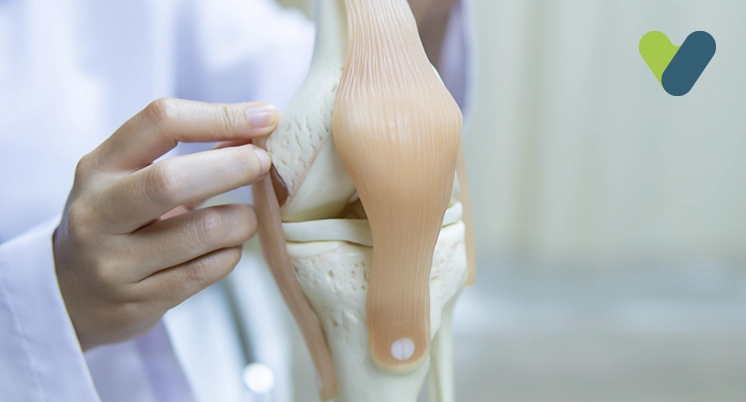Laparoscopy – An Overview
Laparoscopy, also known as minimally invasive surgery or keyhole surgery, is a surgical operation that lets a surgeon see inside the pelvis and abdomen with the help of a laparoscope without requiring big incisions or cuts in the skin.A laparoscope is a small tubular structure with a camera and a light source that transmits the images of the pelvis or abdomen to a display device.
Before laparoscopy came along, a 6- to 12-inch cut is required for conventional abdominal surgery to gain sufficient access for the surgery to be performed. On the contrary, laparoscopic procedures use between two and four small cuts of half an inch or less. One is meant for the camera, while the remainder is for the surgical equipment. The operation is then carried out by the surgeon.
Laparoscopy can be used to obtain a small sample of a tissue for testing (a biopsy) or to examine the internal organs for diagnostic purposes. It may also be employed to excise (remove) organs, including the appendicectomy (removal of the appendix) or the cholecystectomy (gallbladder removal).
Here, you can know about laparoscopy surgery, its benefits, why it is done, the procedure involved, things to expect before and after the surgical procedure, risks, the cost of laparoscopy operation in India, and when to consult a doctor for and following a laparoscopy.
What are the benefits of laparoscopic surgery?
The following are a few benefits of laparoscopic surgical technique over conventional open surgery:- A relatively short stay in the hospital and quicker recovery time
- Less pain and bleeding following the surgery
- Small and fewer scars
- One can resume their normal activities sooner
- Less internal scarring
- Less trauma to the stomach wall
- Reduced haemorrhage risk
- Low risk of wound infection
Why is a laparoscopy needed?
An abdominal laparoscopic procedure can be performed to examine the abdomen and its organs for the following conditions:- Tumours and other abnormal growths
- Injuries
- Internal bleeding in the stomach
- Infections
- Appendix swelling that causes pain
- Unexplained abdominal pain
- Blockages
Laparoscopy can be used to evaluate the stage of cancer in the abdominal region. It is additionally used to check for an abdominal injury and determine the location of the injury as well as how deep it is. It can also determine the amount of internal bleeding patients have.
In women, a gynaecological laparoscopic procedure may be used to check:
- Pelvic pain and issues
- Cysts in the ovaries
- Fibroids (uterine tumours that are not cancerous)
- Fallopian tube blockages
- Infections, such as a bacterial infection of the female upper genital tract
Endometriosis can also be treated using laparoscopy. This occurs when uterine tissue grows outside of the uterus. Laparoscopy can be used in treating ectopic pregnancy or to perform a tubal ligation (tying the fallopian tubes together) to prevent pregnancy indefinitely. Laparoscopy may be used to remove a portion or the entire organ affected by cancer, such as the liver, colon, kidney, prostate, bladder, or ovaries. It can also aid in performing a biopsy.
Other reasons may also exist for the doctor to recommend a laparoscopy. Procedure-description
In order to perform laparoscopy, a laparoscope is used by the surgeon. A laparoscope is a thin tube-like device with a camera lens and a light source that allows the surgeon to see images inside the patient's abdomen or pelvis by transferring the images to a television monitor.
After the patient has been anaesthetised, the surgeon will start performing laparoscopy as follows:
- Make a small cut just below the belly button and additional cuts at the pubic hairline to use other surgical equipment (if laparoscopy is being performed to treat a condition).
- Introduce a tube into the abdomen and pump carbon dioxide into it. Carbon dioxide will cause the abdominal area to swell, making it easier for the surgeon to examine the internal organs.
- Through this tube, a laparoscope is advanced, and the internal structures are examined on the television using images relayed by the laparoscope.
- If the laparoscopy is performed for a particular condition, the surgeon will use the other incisions to insert the surgical tools, and with the help of the laparoscopic images, the procedure will be carried out.
- Once the images are taken (if done for diagnostic purposes) or after the surgical repair is done (if done to treat a condition), the laparoscope, carbon dioxide gas, and the surgical tools will be removed.
- The surgical site will be closed with the help of sutures, surgical staples, or tape, and a sterile bandage or dressing will be placed.
- If laparoscopy is only used to examine the internal organs and make a diagnosis of a condition, the surgical procedure will take 30 to 60 minutes; if laparoscopy is used to excise or remove an organ or treat a condition, the procedure will take longer.
What to expect before surgery?
- The healthcare provider will walk the patient through the procedure. Any questions patients might have should be asked at this point.
- The surgeon will inquire about the patient’s medical history. They may also perform a physical examination on the patient. This is to ensure that the patient is in good health before having the surgery. Lab tests and a few other diagnostic tests may also be required.
- The patient must fast for 8 hours prior to the procedure. This means no eating or drinking after midnight.
- The patient should inform the healthcare provider if they are allergic to any medications, anaesthesia, latex, or tape.
- The patient should tell the doctor about all of the medications they are taking. This includes both OTC and prescription medications, vitamins, and herbs.
- The patient may be told to discontinue taking blood-thinning medications in order to avoid excessive bleeding during surgery.
- The patient may be recommended to use a laxative (stool softener) to keep the bowels empty during the procedure.
- The patient should stop smoking because it slows healing following surgery and increases the likelihood of complications (e.g., infection).
- The patient must be asked to remove any belly piercings (if any).
- The anaesthesiologist may examine the patients and discuss the type of anaesthesia they will be receiving.
What to expect on surgery day?
On the day of the laparoscopy surgery, the patient will meet one of the members of the medical team.- The patient will be asked to remove any jewellery or other items that could obstruct the procedure.
- The patient will be required to change their clothes and will be provided with a gown to wear.
- An IV line must be placed in the patient's arm or hand.
- To collect urine, a urinary catheter may be placed in the patient's bladder.
- The patient may be required to complete a consent form that authorises the surgeon to perform the procedure. If anything is unclear, the patient should read the form meticulously and ask questions.
- Before the surgery, the patient may be given an enema in the rectum and large intestine to help clean the bowels.
- The patient may be given antibiotics.
What happens following a laparoscopy?
- The patient will be shifted to the recovery room following surgery. The recovery time will vary based on the type of anaesthesia patients received. They will be carefully monitored for their vital signs.
- The patient will be taken to the hospital room once their pulse, blood pressure, and breathing have been stabilised and they are alert. If it was an outpatient procedure, the patient may be sent home.
- At home, the patient should make sure the cut is clean and dry. The doctor will give them bathing instructions. Any sutures or surgical staples would be removed at a follow-up appointment after the surgery. If adhesive strips are used, they should be kept dry. They usually fall off within a few days.
- The patient may feel some discomfort or pain from the carbon dioxide gas that is still in their stomach. This pain could last for some days and be felt in the shoulders. The patient may take pain medications according to instructions from the doctor.
- The patient should only take medications that have been approved by their doctor because aspirin and other pain relievers can raise the likelihood of bleeding.
- The patient should refrain from carbonated beverages for at least 1 or 2 days following the procedure. This will help to alleviate the mild pain caused by the carbon dioxide gas. Carbonated beverages may also cause stomach upset.
- A few hours following the procedure, the patient may be permitted to consume clear fluids. They can gradually introduce more solid foods as instructed. The patient should tell the healthcare provider if they are experiencing nausea or vomiting.
- For a few days, the patient may be advised to limit their physical activity.
What are the risks and complications associated with laparoscopic surgery?
Some people may experience side effects from the carbon dioxide gas used during the procedure. Prior to surgery, the patient will be tested for cardiopulmonary conditions that might increase the likelihood of these complications. Among the complications are:
-
-
- Pneumothorax (collapsed lung)
- Hypercapnia (retention of carbon dioxide)
- mediastinal or subcutaneous emphysema
- Hypothermia
-
-
Surgical risks All surgeries carry some general risks. These are some examples: • Anaesthesia-induced allergic reaction • Scar tissue internal adhesions • Excessive bleeding • Infection of the wound
When to consult a doctor?
If patients have any of the following symptoms, they should contact their healthcare provider:- Chills or fever
- Incision site bleeding, redness, swelling, or other drainage
- More pain at the incision site
- Vomiting
- Having difficulty urinating
The healthcare provider may give additional instructions, depending on their situation.
How much does laparoscopy cost in India?
Laparoscopic surgery or keyhole surgery costs in India depend on a number of factors, including:- City
- Hospital or clinic
- Visiting fees
- Pre-operative tests
- Hospital stay and the room opted for the stay
- Type of surgery
- Complexity of the procedure
- Surgeon's experience
- Patient's medical condition
- Age of the patient
- Post-operative expenses
- Complications following the surgery
Moreover, for common procedures such as cholecystectomy or appendectomy, laparoscopic surgery in India can range between INR 50,000 and INR 2,00,000. Complex surgeries, like colorectal surgery or gastric bypass, can cost INR 3,000,000.
Takeaway
Lastly, laparoscopic surgery has transformed the surgical field by providing a less invasive alternative to traditional open surgery. Laparoscopic surgery, with its small incisions, highly specialised instruments, and camera visualisation, offers more benefits than conventional open surgery, including smaller scars, less pain, faster recovery, and a lower risk of complications. Despite some drawbacks, laparoscopy has become a popular technique for a variety of procedures.
With ongoing technological and technique advancements, it is highly probable that laparoscopic surgery will evolve and become even more common in the coming years.


